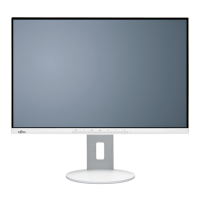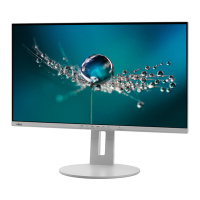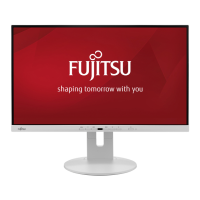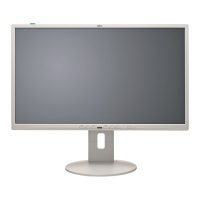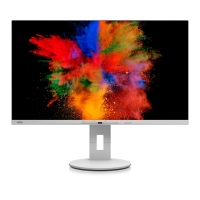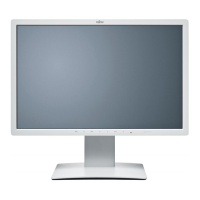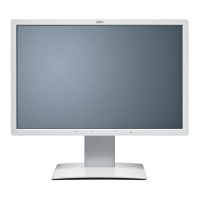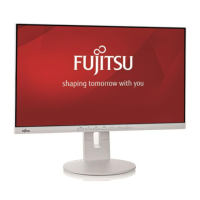
Do you have a question about the Fujitsu B24-9 TE and is the answer not in the manual?
| Screen Size | 24 inches |
|---|---|
| Panel Type | IPS |
| Brightness | 250 cd/m² |
| Contrast Ratio | 1000:1 |
| Response Time | 5 ms |
| VESA Mount | 100 x 100 mm |
| Aspect Ratio | 16:9 |
| Refresh Rate | 60 Hz |
| Color Support | 16.7 million colors |
| Resolution | 1920 x 1080 |
| Connectivity | HDMI, DisplayPort, VGA |
| Viewing Angle | 178° (H) / 178° (V) |
| Stand Adjustments | Tilt |
Identifies intended users and provides general safety advice for manual usage.
Detailed safety regulations and precautions for using the device in an office environment.
Guidelines for using and replacing the monitor's power cable, including certification requirements.
Instructions on how to safely transport the monitor, including precautions against condensation.
Procedures for cleaning the monitor and information regarding device compliance with EU directives.
Guidelines for environmentally responsible disposal and recycling of the device, with contact information.
Detailed instructions for unpacking the monitor and checking for any damage or discrepancies.
Basic setup, ventilation, and guidance on arranging an ergonomic workstation for optimal comfort.
Steps for attaching the monitor base, adjusting height, inclination, rotation, and removing the base.
Details on connecting various cables (Displayport, USB, power) to the monitor ports.
Instructions for connecting the monitor and computer to power sources and data ports.
Procedures for powering the monitor on and off, and understanding the power indicator status.
Overview of navigating and using the On-Screen Display (OSD) menu for settings adjustment.
Explains control panel buttons, OSD menu, and how to select the OSD language.
Details on adjusting image parameters like Phase, Clock, H-position, and V-position.
Explains functions like Auto adjust, Sharpness, Saturation, Hue, and Expansion for picture quality.
How to configure OSD menu settings such as Language, Timeout, and Rotation.
Instructions for accessing and adjusting advanced settings like Presence Sensor and Proximity.
How to use ECO mode for power saving and select the active input source.
Explains different application modes for optimized display settings.
Instructions for adjusting colour temperature and RGB channels for desired color output.
How to control the monitor's audio volume, mute function, and select audio input.
Guide to adjusting brightness, contrast, black level, ACR, and other related settings.
How to lock the OSD menu and the ON/OFF button to prevent unauthorized changes.
Details on DisplayView features like presence sensor, screen rotation, and desktop partitioning.
Further troubleshooting tips for picture disturbances (lines, noise) and screen dimming.
Specifies operating conditions, VESA-DDC interface, and preset operating modes with refresh rates.
Lists common screen resolutions and their corresponding refresh rates.
Details video/TV operating modes and aspect ratios for Displayport connections.
Pin assignment and meaning for the SUB D (VGA) port.
Pin assignment and meaning for the HDMI port.
Pin assignment and meaning for the Displayport socket.
